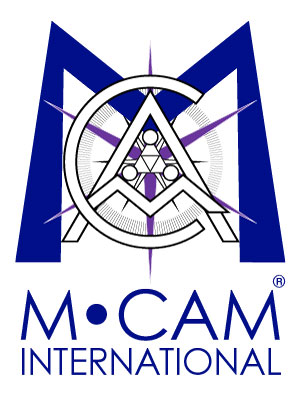Arlington Institute issues an Alert – Economic Disruption: Weathering the Storm
Date: Mon, 2007-12-17
Economic Disruption: Weathering the Storm
Kenneth Dabkowski, Executive Director — The Arlington Institute
Berkeley Springs, West Virginia — December 17, 2007 — Ever since Dr. David Martin gave a speech at The Arlington Institute in July of 2006, his economic report of opaque data-driven certainties has elicited many questions from friends, not the least of which is, “Well, what do we do about all of this?”
Given our position as think tank and not financial advisor, we have worked with Dr. Martin and other advisors to gather some general thinking points, sectors, and emergent fundamentals that are worthy of consideration. Although we cannot offer advice, it is, after all, helpful to see how the architects of scenarios and analysis manage their personal businesses and investments based on their own insights. In our scenario driven world, we would suggest that this is a thoughtful approach which outlines fundamental principles for weathering the financial storms to come.
Discretionary asset allocation to restructuring debt:
If you have your mortgages and credit cards paid off and have discretionary liquidity, sections one, two and three will be particularly applicable. If you hold a debt position, you will find sections three, four and five particularly applicable. These considerations apply to business and personal investments and are based on the analysis found in Dr. Martin’s July 2006 speech: (download link below post)
and TAI Alert #11:
http://arlingtoninstitute.org/tai-alert-11-major-financial-disruption
Fundamental #1: Consider Diversifying globally.
Consider diversifying a portion of your assets into a GB Pound/Euro basket. Most of the international corresponding banks have foreign exchange and currency desks. Super regional banks like Wachovia have the ability to do this.
Consider converting your payment and contracts:
Consider restructuring some or all revenue bearing contracts such that they are denominated in GB Pounds or Euro. At a minimum, it might be worth thinking about doing this with future contracts. Holding contracts payable in both currencies would maintain a diversity of currency risk. Payments in currencies that are more closely linked to a true sovereign bank may attenuate the current dollar exposure risks. Options here are to open an international account using any bank that will allow for one. An electronic banking option might be useful so that you can make your holdings liquid in US Dollars as you need them. For example, consider converting funds back into dollars on a monthly or semi-monthly basis to pay your credit card bills or your employees — however, repatriate only what you need when you need it. If you don’t need it, leave it where it is. Remember, anything over $5K USD or more may trigger an individual Suspicious Activity Report (SAR) under 12 CFR 21. The Bank Secrecy Act was set up, among other things, to provide a means by which Federal authorities could detect money laundering and so the SAR is an important consideration.
Fundamental #2: Consider researching companies that diversify globally.
Sector examples:
Food – retail and production: People need to eat. As the number of farms in the US dwindles, food will continue to require significant transportation networks. With the potential drought/flood conditions caused by climate change and rising energy prices, margins on this will probably increase.
Transportation/shipping: For example, in the European shipping sector, shippers that are involved in freight in terms of ground transportation are doing better than companies shipping cargo containers. Companies shipping liquid natural gas and other energy supplies are doing better than commercial shipping lines.
Basic infrastructure, beverage distribution, water purification: As a sub-sector of food sector, filtration as well as bottling companies have historically done a good job at tracking the food sector when there is destabilization.
Precious usable metals and materials: These are also a potential winner. Things like copper and silicon will still be in high demand for production purposes until nanotech becomes scalable. Gold may increase in value as a parking place but may not be liquid at high prices. Aluminum recycling, plastics/polymer engineering/recycling companies also stand to benefit from higher priced commodities.
Volatile Investments:
Fundamentals: High risk, high reward, derivative/public equity based, non-essential, non-transparent.
Specifics: See links at the top of the document.
Fundamental #3: Consider account accessibility.
Ask the question,” Can I get to get to a physical location and talk with a person?” Electronic environments may not always be stable or predictable. More than one mode of communication will provide more options.
Fundamental #4: Examine your credit agreements.
In the coming environment, many people may be more interested in restructuring their debt situation than in focusing on investing. Take a look at how Americans have historically dealt with debt. The old thesis said, “Put everything into your home and borrow against it.” A new thesis would begin with knowing where you stand on your personal debt.
Read your agreements: Read the fine print of your mortgage, second mortgage, and home equity line of credit. Read the terms of your refinancing paperwork and personal credit card paperwork. Determine what factors may change triggers in credit facilities.
Many people do not know that their mortgage is subject to mortgage interest and repayment rate resets (increases) under certain market conditions. When you start to search through the fine print, look for your covenant exposures. Deep inside credit agreements there are often a whole series of requirements regarding the value of an underlying asset which is securing a debt, i.e. the loan to value ratio. If there are significant alterations in the value of the asset, there are remedies available to accelerate the payment of the loan. These resets have nothing to do with subprime rate increases.
For example, if the underlying value of the asset (house, car, boat, etc.) devalues 10%, and you were leveraged at the original value of the asset, the banks have the ability to change the rates of interest and repayment. Therefore, in a market where housing prices are devaluing on a mass scale, it would be wise to know how much the underlying value of your house could be adjusted, based upon appraisal. As the property value degrades, you could find yourself in a breach of your loan agreement.
As a house is devalued, there is less value securing a loan and the loan portfolio of a lending institution becomes more and more risky. In order to recoup as much of the investment as it can, the lending institution may legally increase interest rates and speed up your payment schedule. This may increase your mortgage payment and may also increase the amount of money going toward interest rather than principal.
Therefore, barring wild cards of large scale legislation and financial regulation, if your debt (mortgage) contract(s) have such terms you may want to start to pay down your exposure on outstanding consumer debt and re-finance debt rather than putting money into safe haven currency investment or safe cash denominated investments. Furthermore, in a highly volatile market, the amount of money saved on interest payment may potentially be greater than the growth on investments. Tax benefits may also be decreased by paying off loans, however, in most cases, the loss of deductions will be offset by the savings in increasing interest payments.
Consideration: Pull out all your loan documentation and read the fine print. Look for mention of triggers that could bring an alteration in terms (higher interest or acceleration of repayment) based on an insufficiency of collateral.
*These exposures may exist on your credit cards as well. It would be well to pay off the debt with the highest interest rates first!
Fundamental #5: Know who owns what
Find out from your bank who owns the mortgage. Many loans have been bundled and sold to third parties as equities (these have also been resold many times over). At the moment, courts have ruled that until proof of ownership exists, banks cannot foreclose on the asset. However, if a bank or third party can prove ownership (or if the legal ruling changes), then they will have the ability to foreclose on the property. Therefore, this second point illustrates why a solid strategy may be to pay down home equity loans particularly those who have been sold to 3rd party institutions.
Regulatory Wild Cards:
As the Bush Administration unleashed its plan to tackle the housing foreclosure crisis(http://www.npr.org/templates/story/story.php?storyId=16981165) other institutions are scrambling to come up with solutions. This may change the considerations above in a positive or negative way. Consider for the moment what was reported in a Financial Times article on 12/13/2007, “The Bank of England and the Bank of Canada, meanwhile, announced sweeping changes to their collateral rules to allow banks to pledge a much wider range of securities in exchange for funds.” (http://www.ft.com/cms/s/0/d9e03c62-a8bb-11dc-ad9e-0000779fd2ac.html?ncli…)
On one hand this development seems to free up liquidity in the market and ease the burden on people who want to acquire mortgages. Commercial banks will be able to borrow from their central banks using non-traditional collateral. However, depending on what is accepted as collateral, we may see similar problems beginning to emerge as occurred in the subprime lending debacle. Changing collateral rules lacks transparency and accountability and, if not held in check, banks will be forced, similar to the subprime situation, to foreclose on assets that don’t add up to the value of the lent capital.
Conclusion:
Above we have given consideration to some fundamentals about how to restructure debt and allocate discretionary funds. Please let us know what you think and send comments to info@arlingtoninstitute.org.
For more information see: The Arlington Institute.

